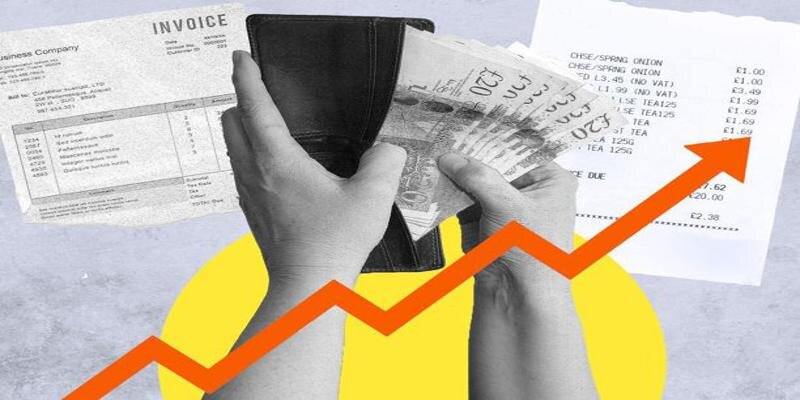U.S. Bank tech spend up 12% to $513M
Dec 04, 2024 By Pamela Andrew
Grapple with the ever-changing financial technology landscape, and the latest move by U.S. Bank cannot be ignored. Take, for example, massive investments in technology for the banking giant, which have skyrocketed by a whopping 12% to an incredible $513 million. This strategic shift in emphasis pinpoints just how vital digital innovations have become in banking. This article examines what increased technology spending could mean for customers, competitors, and future banking.
U.S. Bank is going to increase the budget for technology spending
 Record Investment in Digital Transformation
Record Investment in Digital Transformation
In this regard, one of the largest financial institutions in the United States, the U.S. Bank, has announced that it will expand its tech spending budget share significantly. The Bank's expenditure on technology has grown 12 percent to reach $513 million, and it is deeply committed to digital innovation and modernization. Such a strategic step showed the growing role of technology in banking and highlighted one's wish for the U.S. Bank to be in the vanguard of the emerging competitive market.
Key Focus Areas
The additional investment will be used in the following areas:
- Cybersecurity: U.S. Bank is focused on developing agile cybersecurity to protect customers' data and financial assets' privacy.
- Improvements in Mobile Banking: The Bank would upgrade its mobile app to make the customer experience seamless as demand for mobile banking grows.
- AI and machine learning: Using such technology would enhance fraud detection and help personalize customer experience and smooth internal processes.
- Cloud: Cloud technology in refreshing the infrastructure for efficiency in scaling up U.S. Bank operations with increased reliability of systems.
Possible Impact on Customer and Shareholder Endeavors
A growing tech spending is likely bound to result in dividends worth concrete materials for its customers and shareholders. In other words, customers can have a better user experience through digital interfaces, faster transaction processing times, and new security features. "Investment in technology has been promising to unlock long-term growth, operational efficiency, and competitive advantage in evolving financial services." Detailing the Bank's $513 Million technology
Breakdown of the Bank's $513 Million Technology Investment
Digital Banking Initiatives
The $513 million U.S. Bank invested in technology underlines the Bank's strategy of improving its services on digital banking. A large share of this must be devoted to improving the interface of mobile and online banking to make customer access easy across devices. This means investing to streamline transactions, provide personalized insights into one's finances, and offer user-friendly interfaces that appeal to the changed needs of technologically savvy consumers.
Cybersecurity Enhancements
Undoubtedly, at a time of enhanced cyber threats, a significant amount of the U.S. Bank tech would go towards entrenching cybersecurity measures: advanced encryption protocols, fraud detection capabilities, and reinforcement of network infrastructure to keep sensitive customer information safe as a means of garnering trust in the digital banking ecosystem.
AI and Machine Learning Integration
U.S. Bank's technology investment will undoubtedly involve implementing AI and machine learning algorithms. Such advanced technologies can be deployed to improve everything from risk and credit scoring review processes to personalized financial recommendations, all the way to artificial-intelligence-driven customer support via chatbots, in ways that will even further streamline such processes and enhance customer satisfaction.
Cloud Computing and Infrastructure Upgrades
Of the $513 million, some will likely go into cloud computing and upgrading the infrastructure to support the Bank's growing digital operations. Such an investment can help in faster data processing, better scalability, and quicker development of new financial products and services in an agile manner, thus making the U.S. Bank lead the race of technological innovation in banking.
How the Funds Will Be Used to Enhance Digital Offerings
 The fact that the U.S. Bank is doubling its spending on technology underpins a solid commitment to enhance the digital offerings and, more importantly, the customer experience. It plans to distribute investments of $513 million across top priorities, further strengthening the Bank's technological infrastructure and capabilities.
The fact that the U.S. Bank is doubling its spending on technology underpins a solid commitment to enhance the digital offerings and, more importantly, the customer experience. It plans to distribute investments of $513 million across top priorities, further strengthening the Bank's technological infrastructure and capabilities.
Core Banking Modernization
A large slice of the investment will likely flow into renovating U.S. Bank's core banking systems. The upgrade will become imperative in several ways: improving operational efficiency, reducing hours of operational shutdowns, and hence faster transaction processing. On the road to change, the Bank can build a leaner and agile backbone for its digital services by leveraging cloud-based technologies and microservices architecture.
Enhancing Mobile and Online Banking Platforms
U.S. Bank will undoubtedly continue to develop its mobile and online banking services further to make interfaces more intuitive and add advanced functionalities such as personalized insights into spending and other financial behaviors of customers, among others, with enhanced performance and security in these channels. The notion is to make it seamless and easy so customers will utilize the Bank's digital offerings more.
Investing in Artificial Intelligence and Machine Learning
Much of this tech spend is expected to go toward artificial intelligence and machine learning projects. These can be implemented in several ways: fraud detection, customer service through chatbots, or recommendations for banking products. By embracing the ins and outs of AI and ML, U.S. Bank will be able to enhance its risk management, amplify decision-making procedures, and, therefore, offer more personalized services to its customers.
Improvement in Cybersecurity Practices
With the ever-evolving landscape of cyber threats in the financial industry, the U.S. Bank will invest a significant portion of its tech budget in cybersecurity enhancements. The Bank may employ advanced threat detection systems, enhance data encryption protocols, and conduct regular security audits to find and patch any weak points in its digital infrastructurethe Bank's level of tech spending is separate from Other Top Banks.
Industrywide: Tech Investment Trends
The 12% increase in U.S. Bank's technology spending to $513 million reflects a broader trend among the nation's top financial institutions. But as a digital transformation picks up steam in banking, heavy hitters are investing serious time and resources into staying competitive and meeting evolving customer expectations.
Benchmarking Against Peers
U.S. Bank's spending on technology is relatively modest compared to its peers, but that should be put in context. For example, JPMorgan Chase expects to spend $12 billion on technology in 2022. That compares with the investment announced by U.S. Bank, but JPMorgan also has a much larger asset base and international presence than U.S. Bank and so needs to invest considerably more.
Conclusion
Financial services continue to invest heavily in technology, which has real implications for customers and the banking industry itself. With $513 million allotted for digital transformation-related initiatives, U.S. Bank prepares for evolving consumer expectations as competition multiplies amidst growing technologies in the financial services landscape. Now, as you consider your financial needs and preferences, remember how this will continue to shape U.S. Bank and others.

Verna Wesley Dec 04, 2024
Klarna CEO indicates US initial public offering

Triston Martin Jan 05, 2024
How to Use Keltner Channels for Day Trading

Pamela Andrew Dec 06, 2024
Exchange Rates: What They Are and How They Work

Triston Martin Nov 21, 2023
What Does Annual Income Mean for Credit Cards?

Triston Martin Dec 04, 2024
Amex to prioritize growth in 2024, product innovation in 2025

Susan Kelly Dec 09, 2024